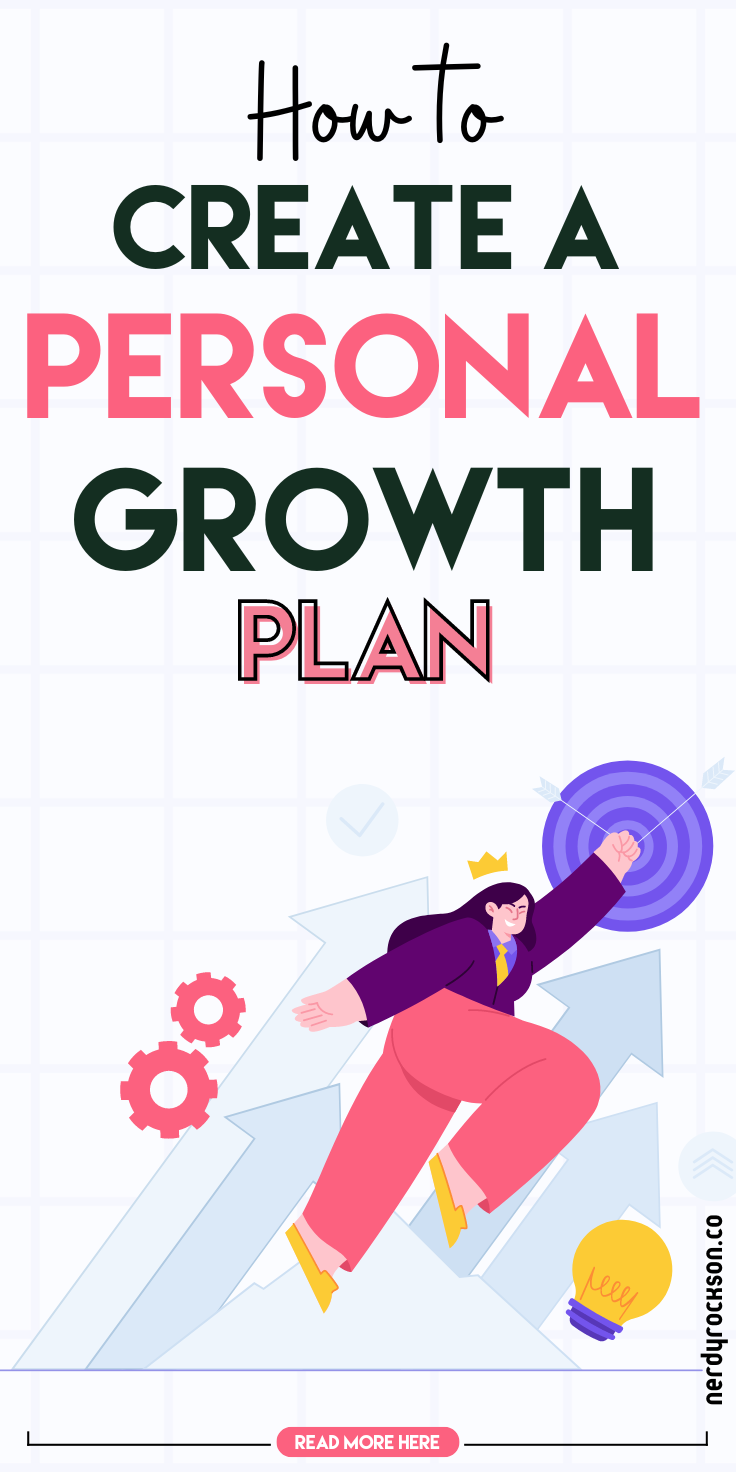Have you ever wondered what it takes to unlock your potential and thrive truly? The answer lies in understanding how to create a personal growth plan. A personal growth plan is a strategic roadmap guiding you toward achieving your goals. Personal growth plans are pivotal; they provide direction, offer clarity, and build focus, pushing you to become the best version of yourself. By creating a structured plan, you cultivate a path that leads to the realization of your dreams, thereby unlocking the door to your full potential.
So, how does one go about creating such a plan? The process entails identifying personal goals, setting SMART (Specific, Measurable, Achievable, Relevant, Time-bound) goals, implementing, reviewing, and adjusting the plan whenever necessary. Here, the core element is a commitment to growth and a desire to see yourself succeed. Remember, the plan is only effective if acted upon—complacency can turn the most detailed plan useless.1
The primary prerequisite for developing a successful personal growth plan is a genuine commitment to personal development and the readiness to invest your time and effort.
Creating a personal growth plan is not just another task to check off your to-do list, but it’s a tool that will shape your future and transform your life. It’s about making conscious decisions daily that will inch you closer to your dreams and ambitions. In the forthcoming sections, we will delve deeper into how to create a personal growth plan, providing you with the necessary tools to start your journey of personal growth. So, are you ready to unlock your potential?
Identifying Personal Goals
In pursuit of personal growth, the identification of personal goals is a critical first step. This process essentially maps your future, giving you a clear trajectory toward the growth you strive for. Without these critical anchors that keep you aligned with your values, aspirations, and purpose, you could easily find yourself adrift in a sea of unfulfilling ventures.
How do you identify these personal goals, you might ask? Embark on a journey of self-reflection and assessment. Take time out of your busy life to sit down with yourself. Ask the difficult questions: What is important to you? What brings you joy, satisfaction, or fulfillment? Where do you want to see growth in your personal or professional life? Put pen to paper, and distinctly lay out this vision for yourself.
Don’t shy away from ambition — dream big, but be realistic and ensure your goals align with your values and capabilities. The beauty of personal growth is that it’s teasingly elusive, always beckoning us towards continuous improvement, regardless of where we currently stand. So, take that first definitive stride towards growth today by identifying your personal goals.
Setting SMART Goals
Delving into the SMART goal method is the next step toward achieving personal growth. It provides a clear and structured approach that enhances not only goal-setting but also your chances of accomplishing those goals. So, what does SMART stand for?2
S – Specific: Rather than vague aspirations, SMART goals are clear, concise, and specific. For example, instead of saying “I want to read more,” your SMART goal could be “I want to read 12 new books this year.”
M – Measurable: How will you know when you’ve achieved your goal? Adding measures means you can track your progress. In our example, the number of books serves as a measure.
A – Achievable: While it’s great to aim high, SMART goals should be within your reach. Thus, ensure your goal is challenging but feasible given your current resources and constraints.
R – Relevant: Every goal should correspond with your broader life objectives. Picking up a new hobby might not align if your overarching aim is career progression—unless there’s a relevant connection.
T – Time-bound: Framing your goal within a specific timeframe gives you a deadline to work towards and enables you to plan effectively to achieve it.
Applying these principles of setting SMART goals to your personal growth plan allows you to turn your broad aspirations into focused, achievable targets. It assists you in creating a clear path for improvement and helps you stay motivated. Remember, your goal is not merely to set goals but to achieve them, too. With this structured approach of SMART goals, you’re well set on paving your journey towards growth. Ready to embark on this exciting adventure?
Setting Your Vision: Where Do You See Yourself?
The process of creating a personal growth plan begins with envisioning where you envision yourself in the future. This requires taking time for introspection, and understanding what you truly want in life, both personally and professionally. So, where do you see yourself? Do you imagine standing at the helm of your own business? Or perhaps you picture living a life of service in a nonprofit organization?
Recognizing your vision entails assessing your passions, values, and skills. Which activities make you lose track of time? What work do you find rewarding and fulfilling?
By envisaging your “ideal self” and projecting this into the future, you create a destination for your personal growth journey. But remember to make your visions specific, yet flexible. Circumstances may change, and along with it your vision. While it’s essential to have a clear destination in mind, fixed visions can sometimes limit exploration and growth.
Take some time right now: visualize your life five, ten, or fifteen years from now. In what environments do you thrive? What kind of work are you doing? What’s your lifestyle like? The clearer your vision, the easier it will be to navigate towards achieving it.
Curious about how to make this vision a reality? The subsequent steps will guide you on your journey of self-discovery and personal growth. Start to piece together your roadmap to a fulfilling future.


How to Create a Personal Growth Plan
Planning for personal growth is not an action you undertake once and then forget about. It’s an ongoing, dynamic process that should become an integral part of your lifestyle. To create an effective plan, you want to think about where you currently are, where you want to be, and how you’re going to bridge that gap. This task involves several steps including goal setting, identifying resources, creating a timeline, and figuring out how to measure your progress. Let’s walk through each below:
Setting Goals
All meaningful pursuits start with setting goals. But not just any goal, it must be specific, measurable, attainable, relevant, and time-bound, also known as SMART goals. It’s crucial to have a clear vision of what you hope to achieve. Ask yourself, what areas of your life do you want to see improvement in?
Identifying Resources
With your goals in place, you now need to identify the resources needed to achieve them. These could be books, online courses, coaching, or the support of a mentor. Knowing which resources you need and where to find them is half the battle won.
Creating a Timeline
Creating a timeline maps out your journey toward your goals. It helps to break down your goals into manageable milestones and gives you a sense of direction. Remember, it’s not a race. The aim here is sustained consistent progress.
Determining Progress Measurements
Finally, an essential part of any growth plan is determining how you’ll measure progress. It could be through feedback from a mentor, reflection on past experiences, or tangible results such as completed projects or achieved milestones. This keeps you motivated and helps you adjust your strategies when necessary.
Implementing the Plan
After crafting a comprehensive personal growth plan, the time has come to put those words into action. You’ve mapped out your course, but traversing it is a whole different journey. Remember, ‘How to create a personal growth plan’ is not just about the planning phase, but also about the implementation.
The importance of implementing your plan cannot be overstated. It is the tangible action of moving towards your goals, of putting your strategies and resources to good use. Without action, your carefully laid plans become mere dreams, floating endlessly in the realm of the imaginary.
Of course, implementing your personal growth plan will not be without its trials. You might experience setbacks, lose motivation, or face unforeseen obstacles. These are not failures but learning opportunities. The key is to keep pressing forward, adapting, and evolving with each step.
Staying Motivated
Now, how do you stay motivated amidst these challenges? You might find it helpful to remember your ‘why’ – the reason behind your goals. This motivation is your fuel, your inner drive that will push you to strive even when the going gets tough. Visualize your success, cherish the milestones, and celebrate every victory, no matter how small. This positive reinforcement can keep your spirits high while enforcing your determination to reach your goals.
Overcoming Obstacles
Overcoming obstacles, on the other hand, demands flexibility. When you meet a hurdle, instead of becoming despondent, view it as a challenge to be conquered. Seek alternative routes, adjust your strategies, or take a moment to rest and recalibrate. Remember, your personal growth plan is a living document, not set in stone. It should evolve with your progress, adapting to your needs and the changing circumstances.
In conclusion, remember this: the journey of personal growth is often challenging but ever-rewarding. Keep your eyes on the prize, and your heart engaged in the process, and you will certainly achieve your dreams. Chase your goals with relentless passion and continue to stay in action. After all, the journey is just as important as the destination.
Reviewing and Adjusting the Plan
You must bear in mind that while it’s essential to create a roadmap to success, a personal growth plan is not set in stone. It is, above all, a dynamic tool, capable of adapting to your evolving priorities and circumstances. That’s why regular revisits are crucial. Laboring under an outdated plan is not just ineffective; it can be downright counterproductive. So, to ensure your plan remains germane and effective, reviewing and adjusting it periodically is essential.
But how regularly should you review your growth plan? The exact frequency can depend on your goals and how quickly you are making progress. However, a good general rule is to do a check-in every quarter. This gives you a chance to assess your progress over a substantial period, consider the impact of any changes in your circumstances, and adjust your goals and actions accordingly.
So what should these periodic evaluations look like? They are an opportunity for self-reflection and honesty. Firstly, measure your progress. Have you been advancing toward your goals? Utilize any quantitative metrics you’ve set to evaluate your progress objectively. If you’re not where you hoped you’d be, ask yourself why. Are there obstacles that you hadn’t considered? Or maybe you’re simply not devoting enough time to your aims?
Remember, reflect upon your strengths and weaknesses too. A SWOT (Strengths, Weaknesses, Opportunities, Threats) analysis can help with this. What are the resources you have at your disposal that you could use more effectively? Are there any new skills or abilities you need to develop to reach your aims?
If you find that your plans need adjusting, don’t be disheartened. Instead, see it as an opportunity to refine your route to success. Adjust your goals or the steps you’ll take to achieve them to keep them in line with your current circumstances. And remember, reviewing and adjusting your personal growth plan doesn’t mean you’re moving backward. It simply means you’re staying true to yourself as you grow and evolve.
Incorporating Positive Habits Into Your Growth Plan
Here’s a key thing to remember in learning how to create a personal growth plan: It isn’t enough to just set goals. You must also cultivate daily habits that support you in your journey to reach them. These habits serve as the building blocks of your growth, creating the foundation for progress and eventual success.
Rather than overwhelming yourself with drastic changes, focus on integrating small yet impactful habits into your daily routine. For instance, you could start your day by journaling your thoughts and plans. This practice not only organizes your day but enhances your self-awareness, which is critical in personal growth.
Delve into self-improvement books that expand your horizons and equip you with relevant knowledge and strategies. What about incorporating affirmations into your mornings? Positive self-talk can significantly shape your mindset, pushing you to preserve and believe in your abilities.
If dedicating time to reading isn’t your cup of tea, you could opt for listening to educational podcasts or watching TED Talks. It’s all about finding what works for you and making it a part of your lifestyle, not a chore.
Moreover, remember that consistency is key when establishing new habits. Stick with them and you’ll start noticing changes, no matter how subtle, in the direction of personal growth and improvement. Inevitably, sticking to these habits will not always be an easy ride. When faced with such challenges, remind yourself of the big picture – your personal growth plan and the goals that lie within it. Use them as a source of motivation and resilience.
Ultimately, incorporating positive habits into your growth plan isn’t just about reaching your goals; it’s about growing and evolving every day on the journey there.
Reaping the Benefits
Once you’ve successfully integrated these positive habits into your routine, you’ll start to see a profound transformation. And it’s not just about achieving your goals. You’ll also witness improvements in other areas of your life like enhanced confidence, increased self-esteem, better relationships, and an overall sense of fulfillment. So it’s worth every ounce of your effort and commitment.
In conclusion, the journey towards personal growth is just as important as the destination. And it’s these daily positive habits that guide you along that journey, pushing you to strive for continuous improvement and turn you into the best version of yourself.
Conclusion
In conclusion, creating a personal growth plan is an essential tool that aids in achieving progress and success in life. By understanding personal goals, setting SMART goals, envisioning your future, and strategizing on how to attain these goals, you place yourself in a position of power and control over your life. Remember, the creation of your growth plan requires an understanding of your present strengths and weaknesses, so do not hesitate to perform a comprehensive SWOT analysis.
As you cultivate your plan and begin to implement it, remember it’s okay to face obstacles. Persevere and use these challenges as stepping stones toward your success. Maintain motivation and adjust your plans when necessary. Furthermore, make it a habit to incorporate positive habits into your growth plan. The benefits of this process are immense, ranging from improved confidence to a general sense of fulfillment.
The road to personal growth and development may seem demanding, but with a well-crafted growth plan, you are already on the path to success. Take it from Brian Tracy who believes in taking action to make changes, ‘your life changes the moment you make a new, congruent, and committed decision’. So, are you ready to create your personal growth plan today?









